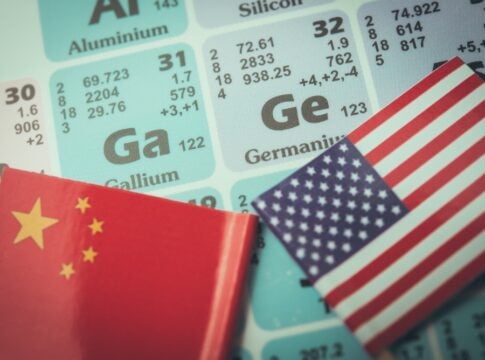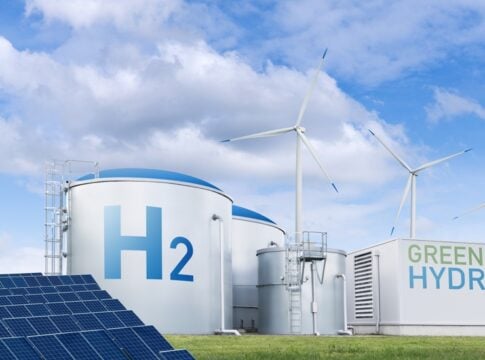ASX has launched three Environmental Futures contracts, marking a significant development for carbon and renewable energy markets in Australia and New Zealand. These new contracts enable participants to price and hedge emissions reduction risk as the economy transitions to a lower carbon footprint. These contracts are the first carbon futures contracts to debut in Australia and New Zealand.
Fee-Free Launch Boosts Carbon Market Liquidity
To foster growth, ASX is offering a temporary fee waiver on all Environmental Futures transactions to build liquidity and encourage early engagement from diverse market participants.
The three futures contracts available for trading on the ASX 24 Market include the following physically delivered:
- Large Generation Certificate (LGC) Futures,
- Australian Carbon Credit Unit (ACCU) Futures, and
- New Zealand Unit (NZU) Futures.
These contracts aim to provide a liquid, transparent forward pricing curve on an annual basis for up to five years. Registered participants can make or take delivery of underlying Certificates or Units at settlement. These instruments can then be surrendered to the government to offset emissions or meet compliance obligations.
Each contract is standardized, with each equaling 1,000 underlying LGCs, ACCUs, or NZUs.
ASX designed its suite of Environmental Futures to meet the growing demand for liquid and transparent carbon credit and renewables trading markets. There has been significant interest in these products from a diverse customer base, including the energy sector, carbon project developers, compliance entities, financial institutions, trade houses, and corporates.
Future-Proofing Australia’s Carbon Market
Daniel Sinclair, ASX Head of Commodities, emphasized the importance of derivatives markets as Australia transitions from a voluntary to compliance carbon market, aligning with other global jurisdictions.
“The transition to clean energy, by definition, is uncertain, and ASX-hosted Environmental Futures will be a key instrument in managing risk and supporting the net zero targets of organisations and policymakers.”
- RELATED STORY: Australia to Merge Compliance and Voluntary Carbon Markets?
Australia’s carbon market is set for significant growth and is poised to become one of the world’s largest producers of carbon credits. Carbon credits, or offsets, represent quantities of abated emissions that fund renewable energy projects and decarbonization efforts. Companies can purchase these credits instead of directly reducing their emissions.
Recent data from the Clean Energy Regulator indicates that about 51% of all ACCUs are now in the registry accounts of safeguard or safeguard-related entities, a volume that could benefit from moving onto the exchange.

At the end of Q1 2024, the Australian National Registry of Emissions Units (ANREU) reported holdings of 38.6 million ACCUs. This marks an increase of 2.4 million ACCUs over the quarter. In Q1 2024, ANREU issued 3.8 million ACCUs, signaling a strong start towards an anticipated record issuance of at least 20 million ACCUs for the year.

For the same period, the number of Safeguard (excluding Safeguard-related) accounts holding ACCUs increased by 11, reaching a total of 54. ACCUs held in these accounts rose to 12 million, an increase of 4.6 million over the quarter.
The volume held by Safeguard entities is likely higher, as other accounts, such as intermediaries and project proponents, may hold ACCUs on their behalf.
Catalyzing Climate Action and Carbon Market Innovation
Established in 2016, Australia’s Safeguard Mechanism requires regulated emitters to either adopt cleaner technologies or buy carbon credits to offset their emissions. This policy allows pollution caps to tighten over time, giving companies a window to adjust their operations to meet emission reduction targets. Additionally, it enables firms to offset emissions by purchasing credits from other polluters with surplus credits.
Back in 2022, Australia’s climate policy advisory has recommended establishing a fully transparent national carbon market. This development could facilitate global carbon trade and potentially merge voluntary and compliance markets.
The federal government has committed to reducing carbon emissions by 43% below 2005 levels by 2030. This new target underscores a stronger commitment to climate action, which could drive significant changes in regulatory and market landscapes.
ASX’s Environmental Futures becomes a key element to that climate commitment. It is also part of a broader ecosystem of current and planned futures and options contracts across electricity, gas, and environmental markets. The new contracts will support Australia and New Zealand’s net zero efforts and clean energy transition.
Environmental Futures could attract new market participants due to their liquidity, enhanced price discovery, and reduced credit risk through central clearing. These futures will provide a standardized price around which liquidity can concentrate, which is particularly important in supporting the ACCU market where certain methods and co-benefits are valued differently.
- READ MORE: Carbon Credit Futures (How Does It Work)
The introduction of these futures contracts underscores ASX’s commitment to supporting the net zero ambitions of businesses and policymakers by providing the necessary tools to manage emissions reduction risks effectively.
The post ASX Debuts Environmental Futures Contracts for Carbon Markets appeared first on Carbon Credits.
Carbon Footprint
Pentagon’s $1B Mineral Stockpile Boosts U.S. Independence from China
The Financial Times reported that the Pentagon plans to spend up to $1 billion on critical minerals. This move aims to cut U.S. reliance on China for essential metals in defense, clean energy, and advanced tech. Led by the Defense Logistics Agency (DLA), this program is the largest U.S. strategic mineral acquisition since the Cold War.
Significantly, the Pentagon’s plan is part of Trump’s broader “One Big Beautiful Bill Act” (OBBA) to enhance domestic and allied resources. Under OBBA, the DLA will use a $7.5 billion allocation to:
-
Expand the U.S. stockpile by 2027 ($2 billion)
-
Invest in mineral and processing supply chains ($5 billion)
-
Launch a Pentagon credit program to support private mining and refining projects ($500 million)
Washington’s Strategic Push: From Market Reliance to State Control
China’s control over global mineral supply chains has raised national security concerns. The country refines 80–90% of rare earths and dominates other key metals, such as cobalt and nickel.
Recent Chinese export limits on rare earths have raised concerns in the U.S. Washington views these limits as an effort to weaponize mineral exports. The Pentagon’s stockpiling shows a move from market-driven sourcing to state-led resource security.
Trump Targets China with 100% Tariffs
As per the latest news, President Trump has confirmed plans to impose 100% tariffs on all Chinese imports starting on November 1. He labeled China’s export limits a “hostile act.” He noted the timeline might change, saying, “Right now it is. Let’s see what happens.”
On Truth Social, Trump accused Beijing of manipulating supply chains and warned of “100% tariffs… over and above any tariff they are currently paying.”
This tariff announcement follows China’s decision to limit rare earth exports. These actions link industrial policy more closely to national security.
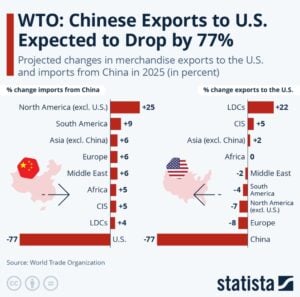
Pentagon Boosts Stockpile with High-Value Minerals
According to the Financial Times, the Pentagon’s buying spree targets four key minerals vital for defense and clean energy:
-
Cobalt – Up to $500 million. Used in batteries, superalloys, and medical implants.
-
Antimony – About $245 million, partly sourced from U.S. Antimony Corp. Key for flame retardants, batteries, and defense components.
-
Tantalum – Around $100 million. Essential for missile systems and aerospace parts.
-
Scandium – A combined $45 million, reportedly from Rio Tinto and APL Engineered Materials. Used in aerospace alloys and electronics.
These purchases will expand the U.S. national stockpile, which already holds $1.3 billion in metals. The new acquisitions focus on materials critical for weapons production, energy systems, and high-tech manufacturing.
A defense official told the FT that several Pentagon offices are now “flush with cash” for mineral procurement. The government is also exploring offshore mineral resources in the Pacific Ocean, rich in nickel, cobalt, copper, and manganese.
Alaska’s Ambler Road Project Approval
President Trump approved the long-contested Ambler Road Project in Alaska. This 211-mile corridor will connect the Dalton Highway to vast mineral deposits in the northwest.
This decision reverses a Biden-era block and is seen as a vital step toward U.S. resource independence. It opens access to copper, zinc, and rare earth elements essential for clean energy and defense manufacturing.
Mineral Stockpiling: Shielding the Nation from Supply Shocks
The U.S. imports over 80% of its critical minerals and relies heavily on foreign refining, according to the U.S. Geological Survey (USGS). This dependence exposes the country to significant supply risks, especially amid rising geopolitical tensions.
The International Energy Agency (IEA) estimates that China controls 90% of rare earth refining and significant percentages of nickel and cobalt refining. Such dominance highlights the risk of relying on a single country for critical inputs.
Thus, to tackle these challenges, the U.S. is building a stockpile of critical minerals. This will reduce supply risks, maintain production of weapons and advanced technologies, and support domestic mining investment.
In short, this stockpile acts as strategic insurance, safeguarding industrial capabilities and boosting national security.
The U.S. aligns with a global trend in mineral stockpiling. The EU requires reserves under its Critical Raw Materials Act. India launched a National Mineral Security Strategy in 2025, while Japan maintains a months-long reserve of rare earths.
Minerals with Net Import Reliance on China
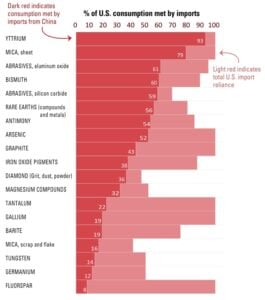
Market Impact and Industry Response
The Pentagon’s stockpiling effort has caught attention in mining and rare earth stocks. Companies like U.S. Antimony and MP Materials are gaining interest as Washington increases mineral procurement.
For example, the DLA’s plan for 3,000 tonnes of antimony—about one-eighth of U.S. annual demand—may stabilize the market for this volatile metal. Analysts expect similar effects for other targeted minerals as demand becomes clearer.
In conclusion, the Pentagon’s $1 billion mineral stockpile plan marks a clear shift. The U.S. government is no longer waiting for markets to secure resources. Instead, it is actively building reserves, funding domestic projects, and aligning economic policy with defense needs.
As competition for minerals increases, the Pentagon’s stockpiling is a defensive strategy and a clear signal. It shows that the next big race among global powers will be for critical minerals. These are vital for future technologies, not oil.
The post Pentagon’s $1B Mineral Stockpile Boosts U.S. Independence from China appeared first on Carbon Credits.
Carbon Footprint
U.S. Green Hydrogen Cuts Give China an Edge in the Clean Energy Race
The United States’ push to lead in green hydrogen, once a centerpiece of its clean energy strategy, is slowing down. Recent policy changes by the Trump administration cut funding for hydrogen hubs. They also reduced tax credits for large-scale projects. Analysts say this slowdown could open the door for China to dominate the emerging market for low-carbon hydrogen technology.
The cuts mark a major shift from the previous administration’s investment-heavy approach. Under the Biden-era Inflation Reduction Act (IRA), the U.S. planned to spend billions to make hydrogen from renewable electricity. The goal was to decarbonize industries such as steel, cement, and chemicals, which are hard to electrify.
Now, with federal incentives being reduced or delayed, several projects are being reassessed. Developers worry that without consistent support, production costs will remain too high to compete globally.
Funding Cuts Stall the Hydrogen Hub Dream
In mid-2025, the U.S. Department of Energy began reviewing funding for several regional hydrogen hubs. These hubs were meant to create networks linking producers, users, and transport systems. Seven hubs were approved in 2023, backed by more than $7 billion in federal funding, but four are now facing cuts or slowdowns.
Industry groups warn that this could affect projects worth tens of billions of dollars. “Policy certainty is crucial for investors,” said one energy analyst cited in the Bloomberg report. “Every delay or rollback increases the cost of capital and slows deployment.”
The U.S. also faces uncertainty about the Section 45V hydrogen tax credit. This credit offers up to $3 per kilogram for hydrogen produced with near-zero emissions. The credit helped close the gap between costly green hydrogen and cheaper fossil-based hydrogen. Without it, the cost of producing green hydrogen in the U.S. could rise from $3 to $5 per kilogram to over $7, according to BloombergNEF estimates.
China Powers Ahead in the Hydrogen Race
While U.S. funding stalls, China is moving fast. The country already leads the world in electrolyzer manufacturing — the core technology used to make hydrogen from water. In 2024, Chinese companies supplied more than 65% of global electrolyzer capacity, up from just 40% in 2022.
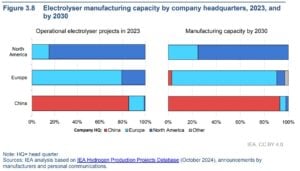
China’s domestic market is also growing. The government has set a goal to produce 200,000 tonnes of green hydrogen per year by 2025 and up to 5 million tonnes by 2030. To support this, provinces such as Inner Mongolia and Hebei have started big solar-powered hydrogen plants.
China’s advantage lies in scale and cost. Electrolyser units made in China cost $600–$1,200 per kilowatt, far lower than the $2,000–$2,600 range typical in the U.S. and Europe. If current trends continue, the price difference might make Chinese-made equipment the top choice for global projects.
Rising Costs and Shrinking Margins
Hydrogen production costs remain the biggest obstacle to global growth. The International Energy Agency (IEA) estimates that low-carbon hydrogen made with renewables costs two to four times more than conventional hydrogen from natural gas.
Producing one kilogram of green hydrogen costs between $4 and $12. This varies based on electricity prices and how efficient the electrolyzer is. Grey hydrogen, made from natural gas, costs $1–3 per kilogram. Analysts say costs must fall below $2 per kilogram to compete in most industries.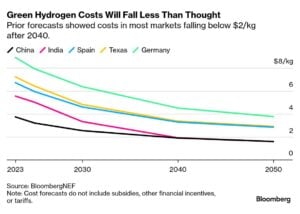
Scaling up manufacturing and securing cheap renewable power are key. The IEA projects that with large-scale deployment, electrolyzer costs could fall by 60% by 2030. But this requires steady investment and policy support — something the U.S. may now struggle to sustain.
According to BloombergNEF, global investment in hydrogen production and infrastructure reached $24 billion in 2024, up 50% from 2023. China accounted for nearly half of that total, while U.S. spending slowed after federal policy reviews.
Companies Pivot Amid Uncertainty
Despite the funding cuts, some U.S. companies are pressing ahead. Plug Power, a leading hydrogen firm, recently secured a $1.7 billion loan guarantee to expand production. The company plans to build several U.S. facilities that will supply green hydrogen to logistics and industrial customers.
Meanwhile, developers are adjusting strategies to reduce costs. Some plan to co-locate hydrogen plants near wind or solar farms to secure cheap power. Others are exploring blending hydrogen with natural gas in pipelines to reduce emissions without full conversion.
Industry leaders also call for cooperation with allies. The European Union, for example, continues to fund green hydrogen projects through its Hydrogen Bank initiative. They argue that closer cooperation across the Atlantic could help Western producers compete with China’s growing supply chain.
The Global Hydrogen Race
The race for leadership in green hydrogen is as much about geopolitics as it is about technology. Countries view hydrogen as a way to cut oil imports, boost industry, and ensure energy independence.
In 2024, global hydrogen demand reached about 97 million tonnes, according to the IEA. Only a small share — less than 1% — came from low-carbon production. To meet the world’s climate targets, that share must grow to at least 20% by 2030.
BloombergNEF expects the global hydrogen market to surpass $500 billion each year by 2050. This includes production, storage, and transport. But success depends on which countries can bring down costs first and scale up faster.
If the U.S. loses momentum now, analysts warn, it may have to rely on imported technology later — particularly from China. The following table compares the costs, market share, and 2030 planned output between the two nations.
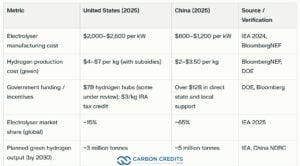
Can America Catch Up?
Green hydrogen is central to decarbonizing heavy industry and transport. It also supports renewable integration by storing excess power from wind and solar. Without continued investment, the U.S. risks missing key climate targets.
According to the Department of Energy’s earlier projections, hydrogen could cut up to 10% of U.S. greenhouse gas emissions by 2050 if widely adopted. That potential could shrink if projects slow or shift overseas.
At the same time, China’s expansion means more global supply, which could help reduce costs worldwide. Some analysts see this as an opportunity for global cooperation — if the U.S. can focus on innovation, efficiency, and regulation rather than pure scale.
The chart from Bloomberg below shows the potential changes under Trump’s current policy moves.

Experts say the U.S. can still recover its position with the right mix of policy and private investment. Restoring tax credits, simplifying permits, and investing in electrolyzer manufacturing can help create a fairer market.
For now, China appears to have the upper hand. Its rapid manufacturing growth and strong state support have created momentum that the U.S. may struggle to match. However, as clean energy technologies mature, global demand will likely outstrip any single country’s supply.
The coming years will decide whether the U.S. remains a key player or becomes a buyer in the green hydrogen market it once hoped to lead.
- FURTHER READING: Element Resources to Build America’s Largest $1.85B Green Hydrogen Plant in California
The post U.S. Green Hydrogen Cuts Give China an Edge in the Clean Energy Race appeared first on Carbon Credits.
Carbon Footprint
Fentanyl Threats, AI, and National Security – ARMR Sciences’ Unified Approach
* Disseminated on behalf of ARMR Sciences Inc.
* For Accredited Investors Only. Offered pursuant to Rule 506(c). Reasonable steps to verify accreditation will be taken before any sale.
PAID ADVERTISEMENT – SPONSORED CONTENT
Fentanyl is devastating American communities at a record pace, with more than 220 deaths every day. Synthetic opioids accounted for over 70,000 U.S. fatalities in 2023, and their impact now extends beyond public health into national security.
At the same time, artificial intelligence (AI) is advancing in ways that could allow adversaries to design new synthetic drugs or bioweapons faster than regulators and security agencies can respond. Coupled with the political weight fentanyl carries in Washington, the U.S. faces a multidimensional challenge.
ARMR Sciences underscores why prevention, innovation, and leadership can align to shield America from this emerging and evolving threat.
Escalating National Security Concerns
Fentanyl’s extraordinary potency – up to 50 times stronger than heroin – makes even trace exposure lethal. Its supply chains cross borders, complicating law enforcement and fueling instability at home.
ARMR Sciences emphasizes that enforcement alone cannot resolve the crisis. Without proactive prevention strategies, the nation risks a deepening cycle of addiction, death, and weakened resilience.
Technology at the Crossroads
AI has the potential to transform healthcare and logistics, but also carries risks of misuse. Researchers showed that advanced AI models could generate tens of thousands of psychoactive compound blueprints in just hours – a dangerous acceleration of synthetic chemistry.
National security leaders, including AI pioneers, warn that adversaries could exploit these tools. ARMR Sciences argues for robust biodefense strategies that include strict controls on sensitive algorithms, enhanced detection systems, and proactive investment in prevention technologies.
Political Pressure and Policy Response
The fentanyl crisis has become a defining issue in U.S. politics, shaping debates on border security, healthcare, and law enforcement funding. Deaths have risen by more than 20% annually since 2019, amplifying public and political demands for action.
ARMR Sciences emphasizes that bipartisan cooperation and evidence-based policymaking are essential to prevent partisan gridlock. Recognizing fentanyl as both a health and security issue can unite leaders behind more effective prevention measures.
ARMR Sciences – A Prevention-Focused Framework
Across each dimension – fentanyl’s deadly toll, AI’s potential misuse, and the political battle for solutions – ARMR Sciences underscores a common theme: prevention is the most effective defense. This means deploying early warning systems, advancing detection capabilities, integrating data-driven tools, and strengthening community resilience before crises escalate.
It also means ensuring that AI innovation develops with responsible guardrails, while national security agencies adapt to evolving synthetic threats. Prevention is not passive; it requires deliberate action, investment, and leadership.
So, Why Should Investors Pay Attention to ARMR’s Solution?
For investors, ARMR represents an opportunity to back a company working to address the convergence of fentanyl’s deadly impact, AI’s potential misuse, and the urgent need for prevention.
Its platform is built on years of defense-backed research and is advancing innovative biotechnology programs:
- Seven years of DoD-supported science established the foundation of ARMR’s platform
- Lead candidate ARMR-100 blocked 92% of fentanyl from entering the brain in preclinical (animal) studies
- A $30M private raise is currently underway
- Plans for a targeted exchange listing in 2026 are in place, subject to market conditions
By investing in this round, investors have a chance to support ARMR as it works to build a potentially category-defining role in AI-powered biodefense.
* This is a paid advertisement for ARMR’s private offering. Please read the details of the offering at InvestARMR.com for additional information on the company and the risk factors related to the offering.
* For Accredited Investors Only. This offering is made pursuant to Rule 506(c) of Regulation D. All purchasers must be accredited investors, and the issuer will take reasonable steps to verify accredited status before any sale. Investing involves high risk, including the potential loss of your entire investment.
* For investors from Canada: This advertisement forms part of the issuer’s marketing materials and is incorporated by reference into the issuer’s Offering Memorandum/Private Placement Memorandum under NI 45-106. Investors must receive and review the OM/PPM and execute the prescribed Form 45-106F4 Risk Acknowledgement before subscribing.
DISCLOSURES & DISCLAIMERS
CLIENT CONTENT: Carboncredits.com is not responsible for any content hosted on ARMR Sciences’ sites; it is ARMR Sciences’ responsibility to ensure compliance with applicable laws.
NOT INVESTMENT ADVICE: Content is for educational, informational, and advertising purposes only and should NOT be construed as securities-related offers or solicitations. All content should be considered promotional and subject to disclosed conflicts of interest.
Do NOT rely on this as personalized investment advice. Do your own due diligence.
Carboncredits.com strongly recommends you consult a licensed or registered professional before making any investment decision.
REGULATORY STATUS: Neither Carboncredits.com nor any of its owners or employees is registered as a securities broker-dealer, broker, investment advisor, or IA representative with the U.S. Securities and Exchange Commission, any state securities regulatory authority, or any self-regulatory organization.
CONTENT & COMPENSATION DISCLOSURE: Carboncredits.com has received compensation of thirty thousand dollars from ARMR Sciences for this sponsored content. You should assume we receive compensation as indicated for any purchases through links in this email via affiliate relationships, direct/indirect payments from companies or third parties who may own stock in or have other interests in promoted companies. We may purchase, sell, or hold long or short positions without notice in securities mentioned in this communication.
RESULTS NOT TYPICAL: Past performance and results are unverified and NOT indicative of future results. Results presented are NOT guaranteed as TYPICAL. Market conditions and individual circumstances vary significantly. Actual results will vary widely. Investing in securities is speculative and carries high risk; you may lose some, all, or possibly more than your original investment.
HIGH-RISK: Securities discussed may be highly speculative investments subject to extreme volatility, limited liquidity, and potential total loss. The Securities are suitable only for persons who can afford to lose their entire investment. Furthermore, investors must understand that such investment could be illiquid for an indefinite period of time. No public market currently exists for the securities, and if a public market develops, it may not continue.
CAUTIONARY STATEMENT: Certain statements in this presentation (the “Presentation”) may be deemed to be “forward-looking statements” within the meaning of Section 27A of the 1933 Securities Act and Section 21E of the Exchange Act of 1934, as amended, and are intended to be covered by the safe harbor provisions for forward-looking statements. Such forward-looking statements can be identified by the use of words such as ”should,” ”may,” ”intends,” ”anticipates,” ”believes,” ”estimates,” ”projects,” ”forecasts,” ”expects,” ”plans,” and ”proposes.” Forward-looking statements, which are based on the current plans, forecasts and expectations of management of ARMR Sciences Inc. (the “Company” or “ARMR Sciences”), are inherently less reliable than historical information. Forward-looking statements are subject to risks and uncertainties, including events and circumstances that may be outside our control.
Although management believes that the expectations reflected in these forward-looking statements are based on reasonable assumptions, there are a number of risks and uncertainties that could cause actual results to differ materially from such forward-looking statements. Risks and uncertainties that could cause actual results to differ materially include, without limitation, those risks identified in the Private Placement Memorandum. Forward-looking statements speak only as of the date of the document in which they are contained, and ARMR Sciences Inc. does not undertake any duty to update any forward-looking statements except as may be required by law.
Any forward-looking financial forecasts contained in this Presentation are subject to a number of risks and uncertainties, and actual results may differ materially. You are cautioned not to place undue reliance on such forecasts. No assurances can be given that the future results indicated, whether expressed or implied, will be achieved. While sometimes presented with numerical specificity, all such forecasts are based upon a variety of assumptions that may not be realized, and which are highly variable. Because of the number and range of the assumptions underlying any such forecasts, many of which are subject to significant uncertainties and contingencies that are beyond the reasonable control of the issuing company, many of the assumptions inevitably will not materialize and unanticipated events and circumstances may occur subsequent to the date of any financial forecast.
ARMR Sciences Inc. takes no responsibility for any forecasts contained within the Presentation. None of the information contained in any offering materials should be regarded as a representation by ARMR Sciences Inc. The Company’s forecasts have not been prepared with a view toward public disclosure or compliance with the guidelines of the SEC, the American Institute of Certified Public Accountants or the Public Company Accounting Oversight Board. Independent public accountants have not examined nor compiled any forecasts and have not expressed an opinion or assurance with respect to the figures.
This Presentation also contains estimates and other statistical data made by independent parties and by management relating to market size and other data about our industry. This data involves a number of assumptions and limitations, and you are cautioned not to give undue weight to such estimates.
ARMR Sciences Inc. is currently undertaking a private placement offering of Offered Shares pursuant to Section 4(a)(2) of the 1933 Act and/or Rule 506(c) of Regulation D promulgated thereunder. Investors should consider the investment objectives, risks, and investment time horizon of the Company carefully before investing. The private placement memorandum relating to the offering of Securities will contain this and other information concerning the Company, including risk factors, which should be read carefully before investing.
The Securities are being offered and sold in reliance on exemptions from registration under the 1933 Act. In accordance therewith, you should be aware that (i) the Securities may be sold only to “accredited investors,” as defined in Rule 501 of Regulation D; (ii) the Securities will only be offered in reliance on an exemption from the registration requirements of the Securities Act and will not be required to comply with specific disclosure requirements that apply to registration under the Securities Act; (iii) the United States Securities and Exchange Commission (the “SEC”) will not pass upon the merits of or give its approval to the terms of the Securities or the offering, or the accuracy or completeness of any offering materials; (iv) the Securities will be subject to legal restrictions on transfer and resale and investors should not assume they will be able to resell their securities; and (v) investing in these Securities involves a high degree of risk, and investors should be able to bear the loss of their entire investment. Furthermore, investors must understand that such investment could be illiquid for an indefinite period of time.
The Company is “Testing the Waters” under Regulation A under the Securities Act of 1933. The Company is not under any obligation to make an offering under Regulation A. No money or other consideration is being solicited in connection with the information provided, and if sent in response, will not be accepted. No offer to buy the securities can be accepted and no part of the purchase price can be received until an offering statement on Form 1-A has been filed and until the offering statement is qualified pursuant to Regulation A of the Securities Act of 1933, as amended, and any such offer may be withdrawn or revoked, without obligation or commitment of any kind, at any time before notice of its acceptance given after the qualification date.
The securities offered using Regulation A are highly speculative and involve significant risks. The investment is suitable only for persons who can afford to lose their entire investment. Furthermore, investors must understand that such investment could be illiquid for an indefinite period of time. No public market currently exists for the securities, and if a public market develops following the offering, it may not continue. The Company intends to list its securities on a national exchange and doing so entails significant ongoing corporate obligations including but not limited to disclosure, filing and notification requirements, as well compliance with applicable continued quantitative and qualitative listing standards.
Disclosure: Owners, members, directors, and employees of carboncredits.com have/may have stock or option positions in any of the companies mentioned: None.
Carboncredits.com receives compensation for this publication and has a business relationship with any company whose stock(s) is/are mentioned in this article.
Additional disclosure: This communication serves the sole purpose of adding value to the research process and is for information only. Please do your own due diligence. Every investment in securities mentioned in publications of carboncredits.com involves risks that could lead to a total loss of the invested capital.
Please read our Full RISKS and DISCLOSURE here.
The post Fentanyl Threats, AI, and National Security – ARMR Sciences’ Unified Approach appeared first on Carbon Credits.
-
Climate Change2 years ago
Spanish-language misinformation on renewable energy spreads online, report shows
-
Climate Change2 months ago
Guest post: Why China is still building new coal – and when it might stop
-
Climate Change Videos2 years ago
The toxic gas flares fuelling Nigeria’s climate change – BBC News
-

 Greenhouse Gases1 year ago
Greenhouse Gases1 year ago嘉宾来稿:满足中国增长的用电需求 光伏加储能“比新建煤电更实惠”
-
Greenhouse Gases2 months ago
Guest post: Why China is still building new coal – and when it might stop
-

 Climate Change1 year ago
Climate Change1 year ago嘉宾来稿:满足中国增长的用电需求 光伏加储能“比新建煤电更实惠”
-

 Carbon Footprint2 years ago
Carbon Footprint2 years agoUS SEC’s Climate Disclosure Rules Spur Renewed Interest in Carbon Credits
-
Renewable Energy3 months ago
US Grid Strain, Possible Allete Sale


